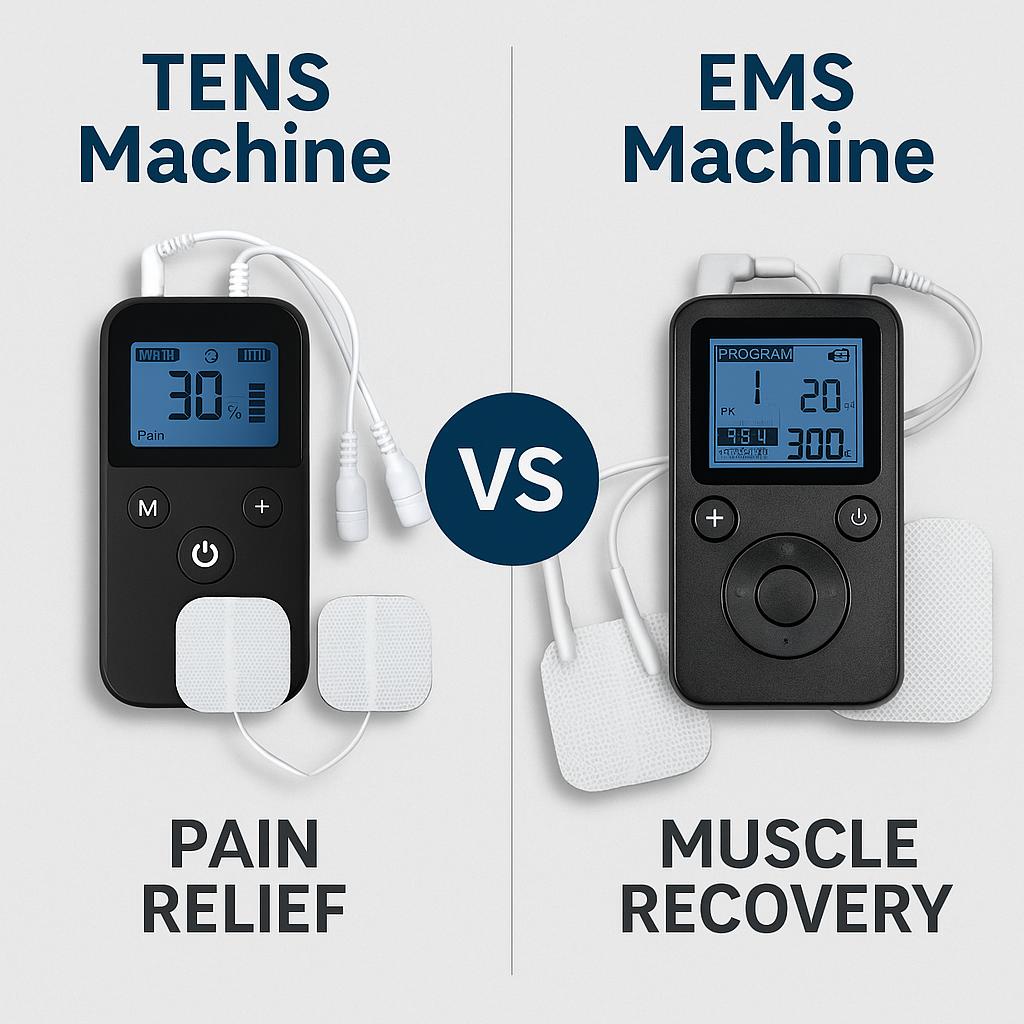Choosing between a TENS (Transcutaneous Electrical Nerve Stimulation) machine and an EMS (Electrical Muscle Stimulation) machine is more than just picking the latest device—it’s about understanding your therapeutic needs, optimizing treatment outcomes, and supporting patient recovery. Whether you’re a physiotherapist, chiropractor, massage therapist, or a clinic owner looking to expand your equipment, selecting the right electrotherapy device is a decision that directly impacts pain management and muscle rehabilitation.
In this guide, we’ll explain the key differences between TENS and EMS machines, helping you make an informed choice tailored to your practice or personal use.
Why Understanding TENS and EMS Machines Matters
Benefits of TENS and EMS Machines:
-
Pain Relief (TENS): TENS units are primarily used for pain relief by blocking pain signals sent to the brain and stimulating the release of endorphins.
-
Muscle Recovery (EMS): EMS devices help contract muscles, making them ideal for strengthening weak muscles and supporting rehabilitation after injury.
-
Drug-Free Treatment: Both devices offer non-invasive, drug-free alternatives to manage pain and boost recovery, especially helpful for chronic pain patients.
-
Portable and Easy to Use: Modern TENS and EMS machines are compact, user-friendly, and perfect for at-home use or portable clinic sessions.
-
Improved Blood Circulation: EMS can stimulate blood flow to specific areas, accelerating healing and reducing inflammation.
TENS vs. EMS: What’s the Difference?
| Feature | TENS Machine | EMS Machine |
|---|---|---|
| Primary Use | Pain Relief | Muscle Strengthening & Rehab |
| How it Works | Stimulates nerves to block pain | Stimulates muscles to contract |
| Best For | Chronic pain, arthritis, nerve pain | Muscle recovery, post-injury rehab |
| Frequency/Intensity | Lower frequency, shorter pulses | Higher frequency, deeper contractions |
| Muscle Activation | No | Yes |
| Regulatory Approval | Widely used for pain management | Used under supervision in clinics |
Advanced Modalities:
-
NMES (Neuromuscular Electrical Stimulation): Similar to EMS but often used in clinical settings for muscle re-education and prevention of atrophy.
-
IF (Interferential Therapy): Uses two high-frequency currents that intersect to provide deeper tissue stimulation, often for pain relief.
-
Microcurrent Therapy: Delivers extremely low electrical currents to promote cellular healing and reduce inflammation.
-
Russian Stimulation: A form of EMS with specific frequency and waveform parameters, traditionally used for muscle strengthening
Key Features to Look for in a TENS or EMS Machine
-
Treatment Modes & Intensity Levels: Look for machines with multiple preset modes (e.g., massage, acupuncture, kneading) and adjustable intensity levels. This flexibility allows you to tailor treatments to individual client needs or recovery goals.
-
Channel & Electrode Count: Dual or quad-channel machines allow for treating multiple areas at once, which is ideal for clinics with high patient turnover or therapists targeting several muscle groups simultaneously.
-
Portability & Battery Life: Rechargeable units with long battery life are essential for mobile therapists or personal users. Compact machines are also easier to store and transport between sessions.
-
Pre-Programmed vs. Custom Settings: Clinics may prefer customizable units for greater treatment precision, while home users might benefit from preset programs that are easy to start with minimal setup.
-
Display & User Interface: A clear digital screen with intuitive controls helps users easily navigate different settings. This is particularly helpful in busy clinical settings.
When to Use TENS vs. EMS
Choose a TENS Machine If You Need:
-
-
Relief from chronic back, neck, or joint pain
-
Pain management for arthritis or sciatica
-
A drug-free, non-invasive solution
-
An option to treat nerve-related pain
-
A safe, daily-use option for home therapy
-
Choose an EMS Machine If You Need:
-
-
To strengthen atrophied muscles
-
Rehabilitation after injury or surgery
-
Recovery from sports injuries
-
To reduce muscle spasms or tightness
-
Assistance with circulation and mobility issues
-
Common Mistakes to Avoid with TENS and EMS Devices
-
Using the Wrong Device for Your Condition: TENS won't strengthen muscles, and EMS won't block pain signals effectively. Know your primary goal before choosing.
-
Incorrect Electrode Placement: Placement dramatically affects results. Follow manufacturer guidelines or consult a physiotherapist for the best outcomes.
-
Setting Intensity Too High Too Soon: Start low and gradually increase the intensity. Excessive settings may cause discomfort or even muscle fatigue.
-
Ignoring Safety Precautions: Don’t use near the heart, head, or broken skin. Always follow the manufacturer and healthcare provider instructions.
“TENS is ideal for patients seeking relief from chronic pain without medication, while EMS is better suited for those recovering from muscle injuries or surgery. Choosing the right device depends on whether your goal is pain relief or muscle activation.”
— Dr. Sarah Mitchell, PT, DPT, Clinical Physiotherapist and Rehabilitation Specialist















